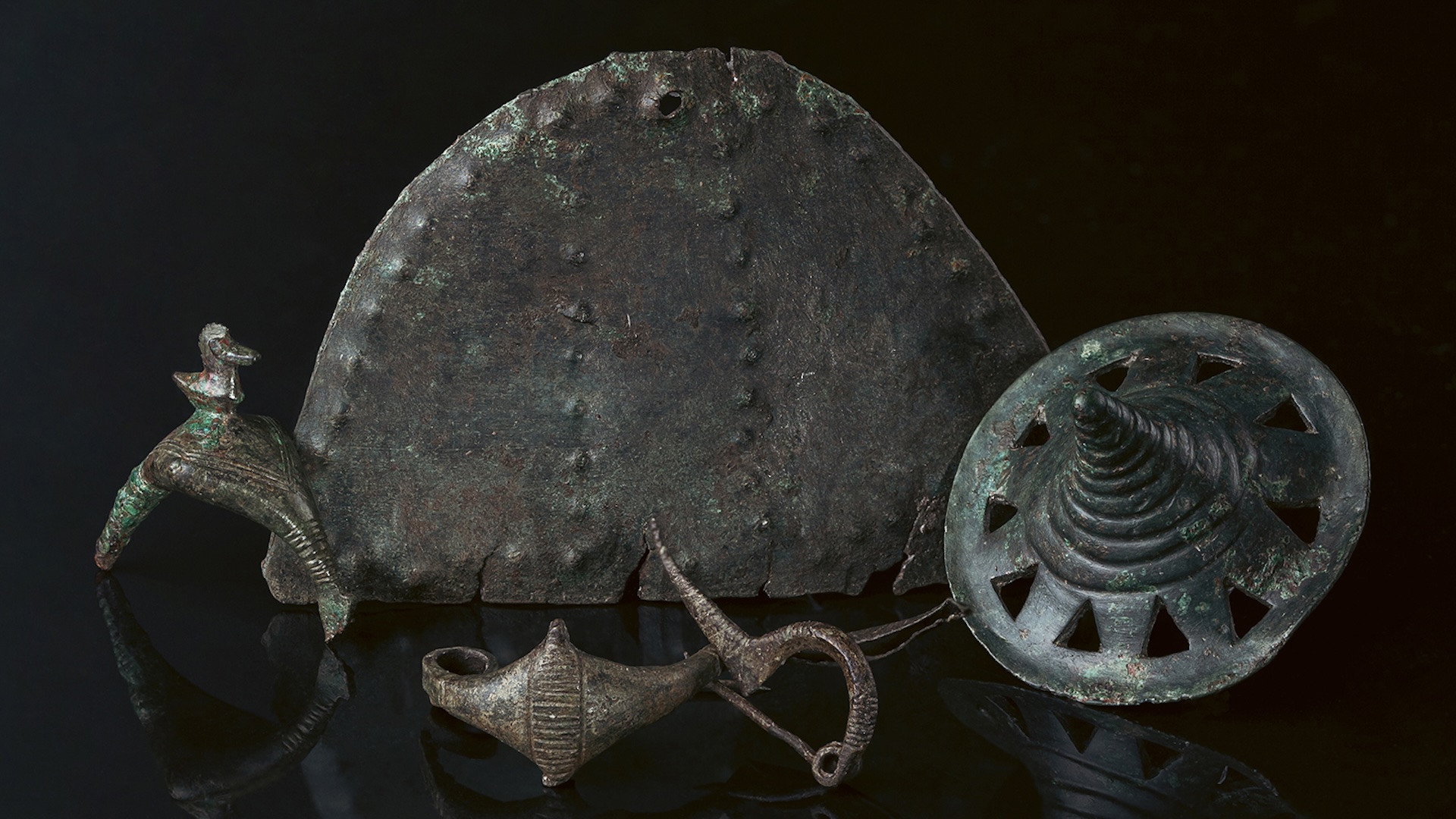
Ancient people in Hungary hid at least six metal hoards around a mysterious settlement on a lone hill as early as the 15th century B.C., a new study using lasers and fieldwork finds.
In just one year, researchers using metal detectors identified over 300 artifacts from the Late Bronze Age (1450 to 800 B.C.) and the Early Iron Age (800 to 450 B.C.), including jewelry, military decorations and weapons.
The oldest Late Bronze Age findings date back to between 1400 and 1300 B.C., though the majority are Bronze Age artifacts from 1080 to 900 B.C., according to the study, which was published March 27 in the journal Antiquity. In addition to metal assemblages, the team uncovered amber beads, fabric and leather remains, as well as boar and domestic pig tusks.
The archaeological work took place at Somló, a volcanic hill in western Hungary notable for its elevation over a relatively flat landscape. Today, the region is primarily known for its wine production. In the late 19th century, however, scholars realized it was also an important archaeological site when local farmers and wine producers began unearthing ancient artifacts, study first author Bence Soós, an archaeologist-museologist at the Hungarian National Museum, told Live Science in an email.
The artifacts discovered by the farmers and viticulturists included jewelry, weapons and bronze vessels. The amount and quality of the findings indicated a significant human presence between the 13th and sixth centuries B.C. The specific locations of their discoveries, however, were not recorded, and researchers still don’t know who lived in western Hungary during this period, Soós explained.
Earlier finds near Somló include Early Iron Age grave goods found in monumental burial mounds, prompting some researchers to speculate that prominent landmarks such as Somló were the seats of power of an elite class of warrior leaders. As such, Soós, his colleagues and volunteers launched a new archaeological investigation. These included “extensive metal-detector and field-walking surveys” as well as lidar (light detection and ranging), in which lasers are shot from an aircraft to map the land’s topography, the team wrote in the study.
Related: 10th-century woman buried with weapons in Hungary is 1st of her kind, but researchers are hesitant to call her a warrior
“Thanks to the efforts of our volunteers, our investigations documented the first metal hoards on Somló,” Soós said. “In the first year of research, six Late Bronze Age and Early Iron Age metal assemblages were discovered.”
As of April 2025, the team has recovered over 900 metal finds, most of which are from a plateau on the southeast part of the hill. The artifacts include many objects associated with bronze working, suggesting the metal was produced locally.
The findings are particularly noteworthy because they provide insight into the transition between the region’s Late Bronze and Early Iron Ages during the late ninth century B.C., which is not well understood, according to Soós. One assemblage in particular, called Hoard V, represents the first evidence of local metal deposition customs (the practice of burying metal objects, likely for a ritualistic or symbolic purpose) during this transitional period. It also features metal objects stored within a ceramic vessel — the first example of its kind in western Hungary from the end of the Late Bronze Age.
The findings from Somló join other evidence suggesting that the people living here between the 13th and sixth century B.C. likely lived in tribal or clan-based societies led by elite warriors. Specifically, the recent discoveries indicate that Somló might have been one of their seats of power, as well as the host of a prominent community whose culture included the deposition of metal hoards, Soós said.
While Soós and his colleagues were not able to confirm the presence of a metal-producing workshop, they did also uncover parts of a building.
The team hopes that further investigations will shed light on the chronology of Somló Hill’s habitation and its hoarding traditions, they wrote in the study.



